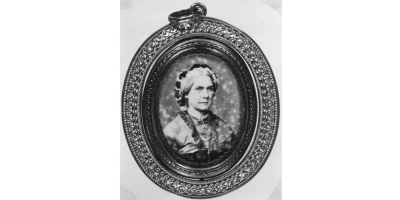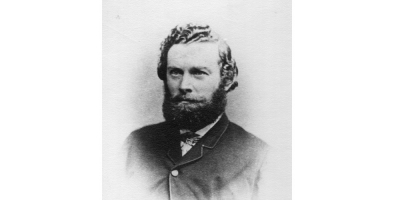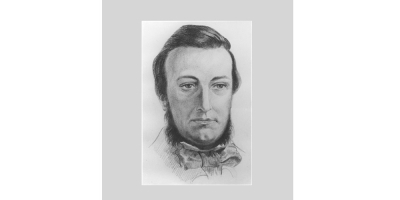The 'Melbourne Lying-in Hospital and Infirmary for Diseases of Women and Children', was founded in August 1856 by two groups which saw the hardship women were facing in post-goldrush Melbourne.
Gold had brought poverty and social turmoil, as well as wealth.
- Ladies' Committee (Committee of Management)
- Doctors
A group of women, headed by the wife of Melbourne’s Anglican Bishop, were attempting to start a lying-in hospital but had been rebuffed by the Melbourne Hospital and the government.
Two young doctors had already rented a house for the same purpose when they learned of the ladies' proposal. The groups came together and within days the new hospital was on its way under their joint management.
Ladies' Committee
The Ladies Committee, also known as the Committee of Management, was made up of twenty women, many the wives of protestant clergymen. Despite their active involvement in public affairs such as this, it is difficult to learn much about them, other than as the unrecorded wives of their better documented husbands.
Members of the first Ladies' Committee
| 1856-1875 | Mrs Charles Perry (Fanny) President |
| 1856-1869 | Mrs Jennings (Alicia) Honorary Treasurer |
| 1856-1857 | Mrs Tripp (Elizabeth) Honorary Secretary |
| 1856-1866 | Mrs Robert Barlow |
| 1856-1856 | Mrs Barry |
| 1856-1868 | Mrs Cassell |
| 1856-1857 | Mrs Draper |
| 1856-1856 | Mrs Griffith |
| 1856-1856 | Mrs Guiness |
| 1856-1857 | Mrs Handfield |
| 1856-1860 | Mrs Heatherington |
| 1856-1857 | Mrs Odell |
| 1856-1857 | Mrs Macartney |
| 1856-1857 | Mrs McCombe |
| 1856-1869 | Mrs Puckle |
| 1856-1856 | Mrs Seddon |
| 1856-1856 | Mrs Simpson |
| 1856-1885 | Mrs J.T. Smith |
| 1856-1857 | Mrs Stubbs |
| 1856-1857 | Mrs Williamson |

Frances Perry
Mrs Frances Perry came to Melbourne in 1847 with her husband, Melbourne’s first Anglican Bishop. She was instrumental in forming the Ladies’ Committee which founded the 'Lying-in Hospital' and was its President for 20 years until she returned to England after her husband's retirement. The first meetings to discuss the great need for medical care among Melbourne’s poor women were held in the Anglican Deanery.

Elizabeth Tripp
Mrs Elizabeth Tripp served as Honorary Secretary of the Committee of Management, for about two years. She attended the first meetings when the hospital’s creation was discussed and played a vital role communicating with the government, subscribers, contractors and doctors during the critical first two years of the hospital’s existence.
Doctors
Two young medical men, recently arrived from England and Ireland, had seen the same wretched conditions poor women of Melbourne were enduring and were acting on their own account to open a lying-in hospital. They joined the Ladies’ Committee to found the 'Melbourne Lying-in Hospital and Infirmary for Diseases of Women and Children' (now the Royal Women's Hospital).

Richard Thomas Tracy, M.D., L.R.C.S.I.
Richard Tracy arrived in Melbourne via a brief stay on the goldfields and rapidly became an active member of the fledgling medical fraternity. He co-founded the 'Lying-in Hospital' and was deeply involved with it for the remainder of his life, establishing himself as Victoria’s pre-eminent specialist in women’s health and the 'Lying-in Hospital' as one of the finest of its kind in the world.

John Maund, M.D., M.R.C.S. (Eng.)
John Maund’s life was tragically short, dying at only 35 years old and barely seeing the hospital he helped to create establish its place as a vital Melbourne institution. Nonetheless, his analytical mind helped to set the course for the hospital’s future scientific endeavours.